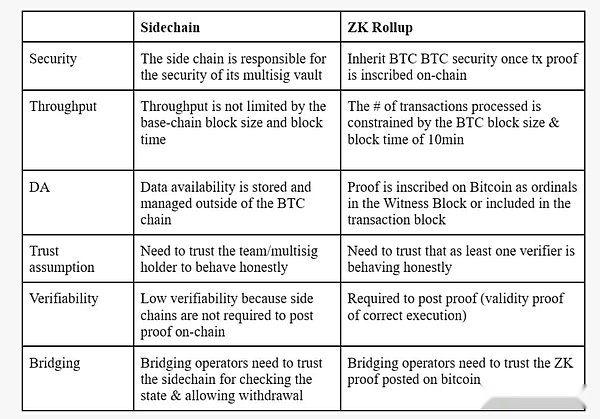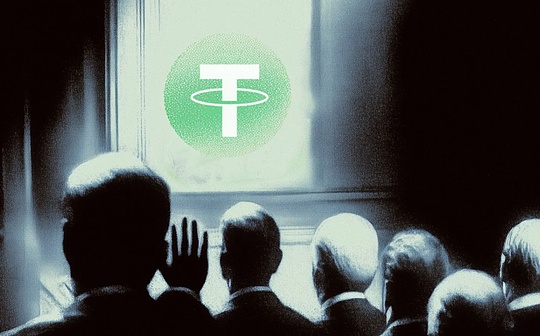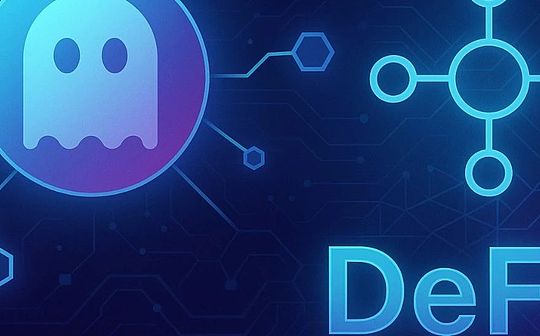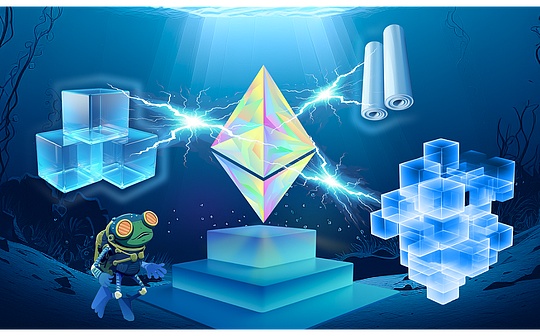
Author: Catrina Wang Source: Portal Ventures Translation: Shan Oppa, Bitchain Vision
In May 2023, we launched a three-month research project that assumes the Bitcoin ecosystem will recover.This led to our paper “The Panda Renaissance” published in November 2023. Since then, market interest and capital investment in this topic have increased exponentially. In this article, we will shareReflections on previous articles and reflections on the following issues:
1. Current status of BTC ecology: Observation and Comments
2. How our thinking evolves
-
Our Still Strong Conviction
-
Areas where our perspectives change
3. BTC’s new chapter: What will happen next
-
predict
-
Blank Field: Blank vertical field that excites us
For brevity, we will introduce our observations, opinions, doubts, and predictions in key points.
1. Current status of Bitcoin ecosystem: Industry observations and comments
1.Value propositions are indistinguishableFierce competition between EVM L2s/sidechains: Competition has changed from “who needs the least to trust” to who can 1. Execute the most complex airdrop game, and 2. Access the deepest liquidity through Bitcoin “Giant Whale”.This shift also explains the geographical concentration of L2s in the Asia-Pacific region.
2.Intensified fragmentation
-
Liquidity and expansion solutions:More than 80 sidechains/rollups, and 5+ meta protocols.
-
Token standard: There is a duopoly between BRC20 and RUNE, followed by a series of other long-tail element protocols such as ARC, CRBC, and RGB.
-
Indexer: Each token standard requires its own indexer.
3. Sidechain and Rollups hope that BitVM can re-anchor them to L1 in a trustless manner:I’m skeptical of “L2”, they are initially positioned as sidechains and claim to become “trustless” upon integration with BitVM.I have two suspicions:
Technical feasibility: Implementing the verification of the “optimistic Rollup” style on the chain requires the development of millions or even billions of logic gates.Not only is this process expensive (because it runs on the base layer), it is also slow due to BTC block time constraints.Additionally, it can take a lot of time to complete.As far as I know (correct me if I’m wrong), BitVM has become a community project with common challenges of decentralization: No entity is responsible for its development schedule, milestones, quality and overall success.
GTM timing: According to various sources, it will take 18-24 months for BitVM to be ready.Even if BitVM goes well and they deliver on their promises, it means these L2s will remain centralized with multi-signature for the foreseeable future.Before that, in what areas will they compete?
4.There are a lot of trust assumptions in L2 (Side Chain + Rollup) and meta-protocols
It is necessary to clarify the classification of side chains and Rollup.The following table details the difference based on our conversations over the past few months – feedback is welcome.

The trust hypothesis of side chains:
-
The linkage between the BTC base layer and the 2-layer solution is mainly centrally managed through multiple signatures controlled by the core team.
-
The finality of the status and transaction is not verified by the BTC basic layer, but by the project team.
ZK Rollups’ trust assumption:
-
Currently, there is no way to perform zk verification on Bitcoin.The sorter needs to be centralized (similar to ETH L2s), and there is a trust assumption that the decentralized validator network will correctly verify the transactions checked by the prover.
-
Since data needs to be returned to Bitcoin, the number of transactions Rollups can handle is limited.
BitVM (Optimistic Rollup) Trust Assumption:
The main use case for BitVM is to promise a bridge without trust.The advanced step is that the BitVM code can be broken down into logic gates so that the fraud prover performs a binary search and finds points where the execution is inaccurate.
While anyone can provide false proof to confiscate the operator’s collateral (if the operator behaves maliciously), BitVM presents an economic challenge.The amount of bridge liquidity that needs to be matched as collateral.For example, if I bridge 10 BTC through BitVM, BitVM’s operator needs to provide 10BTC as collateral for this single transaction, which is economically difficult to scale.
Trust Assumption of Meta-Protocol: Indexer
BRC20, RUNE, PIPE, Trac, etc. all require their own indexers to convert the “state” of an account-based model from a native UTXO model of BTC to a native UTXO model of BTC.Ethereum has internalized the indexing function because its VM can calculate state, while BTC’s indexer is similar to Ethereum’s GETH.
To understand the concept of an indexer, think of all UTXO transactions as raw Excel data, where a thousand addresses trade with each other.To understand who owns what and the final balance (account status), the indexer works similarly to a pivot table.They calculate addition and subtraction and determine the final balance by address.Currently, indexers such as BestInSlots, GeniiData, and ALEX Labs Oracle provide developers with APIs to directly extract balances or “account status” of meta-protocols such as BRC20.
Discrete log contracts (DLCs): Dependence on external oracles
DLC in Bitcoin relies on external oracles to determine the outcome of the contract.In DLC, the role of the oracle is to sign a message indicating the result of the event.The contract parties then use this signature to build and broadcast transactions that settle the contract on the Bitcoin blockchain.The security and credibility of DLCs depend heavily on the reliability and honesty of the oracle, as its data directly affects the resolution of the contract.
5. Continuous doubts about VCs in the Western Hemisphere: I have had many discussions with other investors about the value of BTC L2.While we agree that most Bitcoin “L2” are considered “fake” because they do not necessarily inherit BTC security and that many L2s may disappear in the coming months, we believe this vertical is still valuable,because
Flawed, in its infancy and inevitable:The population of BTC holders who want to put BTC in a hard wallet and bury it in their backyard has been saturated over the past 10 years.While BTC’s layer 2 solution is below standard in terms of security and trustlessness, the past year is just the beginning of Bitcoin’s scaling and programmable solutions.In addition to the existing store of value identity, Bitcoin’s elf transforming into a more general and programmable chain has emerged from the bottle.This trend is reflected in the public’s enthusiasm for pledges, transactions and the parabolic increase in Bitcoin’s on-chain transaction fees since 2023 (up to $40 per transaction in December).With the advent of OP_CAT, various Rollup and sidechain solutions, use cases that once belonged to Ethereum and Solana are now being explored on Bitcoin.
Improve the capital efficiency of BTC:BTC remains one of the most valued assets in institutions.More financial instruments based on or derived from Bitcoin are needed.However, the design limitations of the base layer make such products difficult to achieve.This highlights the need for a second-tier programmable solution.
This trend solves the survival crisis of BTC:More programmability creates a demand for Bitcoin block space, resulting in more fees as a new incentive for miners to protect network security.This is especially important every time you halve it.This was discussed in more depth in the previous article.
6. More and more creative ways to utilize Bitcoin block space
-
As a way to burn data in witness blocks and transaction blocks
-
As a permanent on-chain data storage (this is an excellent product market fit for luxury/collection use cases)
2. Review: How our ideas evolve or continue
Our right place:Overall trends, timing and demand are related to issuing digital assets (meta protocols), programmable solutions (Layer 2s, Rollups) on Bitcoin, and efforts to improve BTC capital efficiency (Babylon, Lorenzo).
There is no conclusion yet:The future of BTC may be native or xVM.Although this is not a consensus view,But we think BTC should develop its own native ecosystem rather than adopting the seemingly “convenient” Ethereum Virtual Machine (EVM) approach.While we fully acknowledge the benefits of the EVM approach (such as interoperability with the existing defi ecosystem, ease of joining solidity developers, and solidity being the most tested language, etc.), BTC Layer 2 tokens with ERC-20 formatIt seems paradoxical, just as Arbitrum has launched its tokens as Solana SPL.
What changes have taken place in our position: “The original text of Panda Revival proposes two paths: make BTC more “programmable” like the general-purpose L1, or make it more “capital efficient” to expand its capabilities and become a more productive financial asset.
At the time, I leaned towards the latter.BTC’s inherent scripting language limitations make it unsuitable for complex programmability.However,My perspective has changed over the past year.The market has shown demand for the Bitcoin block space, transforming it from a dormant “digital gold” chain to a programmable universal chain.Ethereum has now become a “sandbox”: the Bitcoin community is learning lessons from Ethereum’s DeFi development over the past 7 years to innovate on Bitcoin.
3. A new chapter in BTC ecosystem: prediction and blank areas
predict:
1. Each method will have 1-2 winners.This means that there will be 1-2 winners on EVM (such as Botanix), meta protocol (probably BRC20 or Rune), bridgeless base layer methods (such as Arch), ZK rollup, and STX (already pioneers).There are 5-6 major players in the next cycle, and each participant’s valuation exceeds $50 billion at its peak.
2. Safety and risk avoidance: At present, various expansion solutions are competing for attention and liquidity.However, over time, especially after security-related events, liquidity will shift to the safest, least trustworthy L2/rollup.
3.Most other Layer 2 solutions, sidechains, and Rollup will not survive.Until then, competition will still be fierce, seeing who has the best airdrop plan, who can reach high-signal investors, and who can connect with Bitcoin giants.
4. Developers will gradually awaken from their BitVM dreams, it is too late, too slow, too costly to realize it meets builders’ need for trust minimization.
5. BTC DeFi will surpass ETH:I always think Ethereum is the test site for BTC.Everything that has happened on Ethereum since 2017 has been based on the false belief that “BTC cannot”.However, this is no longer the case.If I take risks with my tokens (staking, farming, leverage), would I prefer low value tokens or BTC’s gains?I fully believe that BTC will have a DeFi and infrastructure ecosystem that is comparable to Ethereum and is even stronger.
6. The native “ERC-20” token standard on Bitcoin will appear:Bitcoin needs its own token standards similar to ERC20, which can operate in different L2 and grassroots levels.It can run on various L2 and base layers.One way to achieve this is through a collaboration between Arch, a bridgeless base layer programmability solution, and Auran, a native interoperability solution based on Bitcoin TSS.Such standards will become an important unlock for the winners who will eventually stand out in the fields of stablecoins, institutional adoption, on-chain earnings products, etc.
Blank vertical fields of interest to us
1. Bridgeless experience (more suitable for use cases in the basic layer): It is unlikely to implement completely trustless on any scalable/programmable layer – frankly, this is not what most users care about unless a hack occurs.With the trust assumptions constant in most rollups/L2, a large number of low-speed use cases (such as exchanges, lending, native gains, pledges, etc. of high-value collectibles), users and developers prefer to implement them at the base level.The same level of programmability (via solutions like Arch Network) without bridging to another L2.
Of course, the trade-off here is speed, as transactions will be limited by BTC block time.However, not all operations need to be exceptionally fast on-chain.Bridgeless solutions are crucial to unlock new parts of “slow and stable” use cases on the base layer, such as stablecoins, lending, forecasting markets, etc.
2. Unify infrastructure by orchestrating across various L2 states (more suitable for use cases in the second layer): Provides a “one-stop” developer/consumer experience to address the rampant liquidity and functional fragmentation issues in today’s Bitcoin ecosystem.Auran Network is a pioneer in the field and we are excited about it.
“The secret to startup success: Find large, highly fragmented industries with low NPS; vertically integrate solutions to simplify value products” – Keith Rabois, Founders Fund
3. Export BTC liquidity to other L1s: Many high-profile new/existing alt L1 are exploring ways to leverage BTC liquidity to boost growth of their ecosystem.Solutions like Zeus Network create a messaging layer between Solana and BTC, which may be popular.
4. The winner of stablecoins:There are currently more than 10 stablecoin projects, and in-depth cooperation with mainstream programmability and interoperability solutions will become the key to dominance in the market.
5. OP CAT:OP_CAT (BIP-347) is a Bitcoin improvement proposal designed to simplify and extend the functionality of Bitcoin to enable logical loops and conditions.It will allow the creation of rules or conditions for how Bitcoin is used, opening the door to many development possibilities, including Tier 2, smart contracts, and more.The schedule looks like there are more than 12 months left.
6. Native Ordinals trading platform: If history repeats itself like SOL and ETH, most of the trading volume will be dominated by native professional trading platforms such as Blur or Tensor.So far, most of Ordinal’s trading activity has taken place on Magic Eden and OKX.As the NFT winter fades, we expect native Ordinal trading platforms like Ordinal Hive to thrive.
7. Alternatives to BitVMto achieve no trust-free, or at least minimize L2 <> base layer bridge
8. On-chain BTC-on-BTC revenue products for institutions:Given STX’s BTC earnings affordability and regulatory compliance, it could be a winner.
9.Liquidity stake on Bitcoin: Simulated ETH, butLorenzo AgreementThe LST-on-BTC project has its advantages and can optimize the liquidity of BTC Defi.








